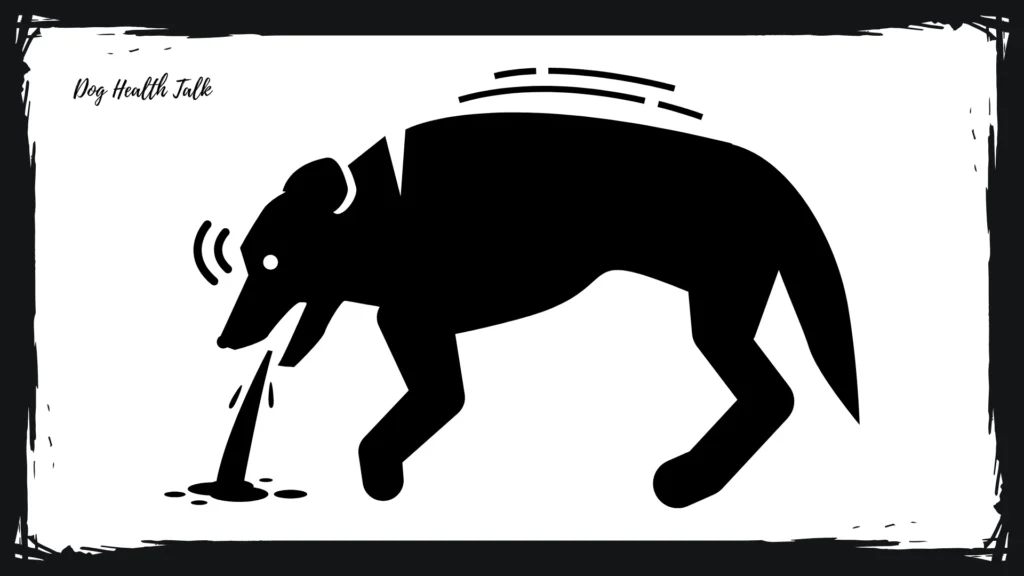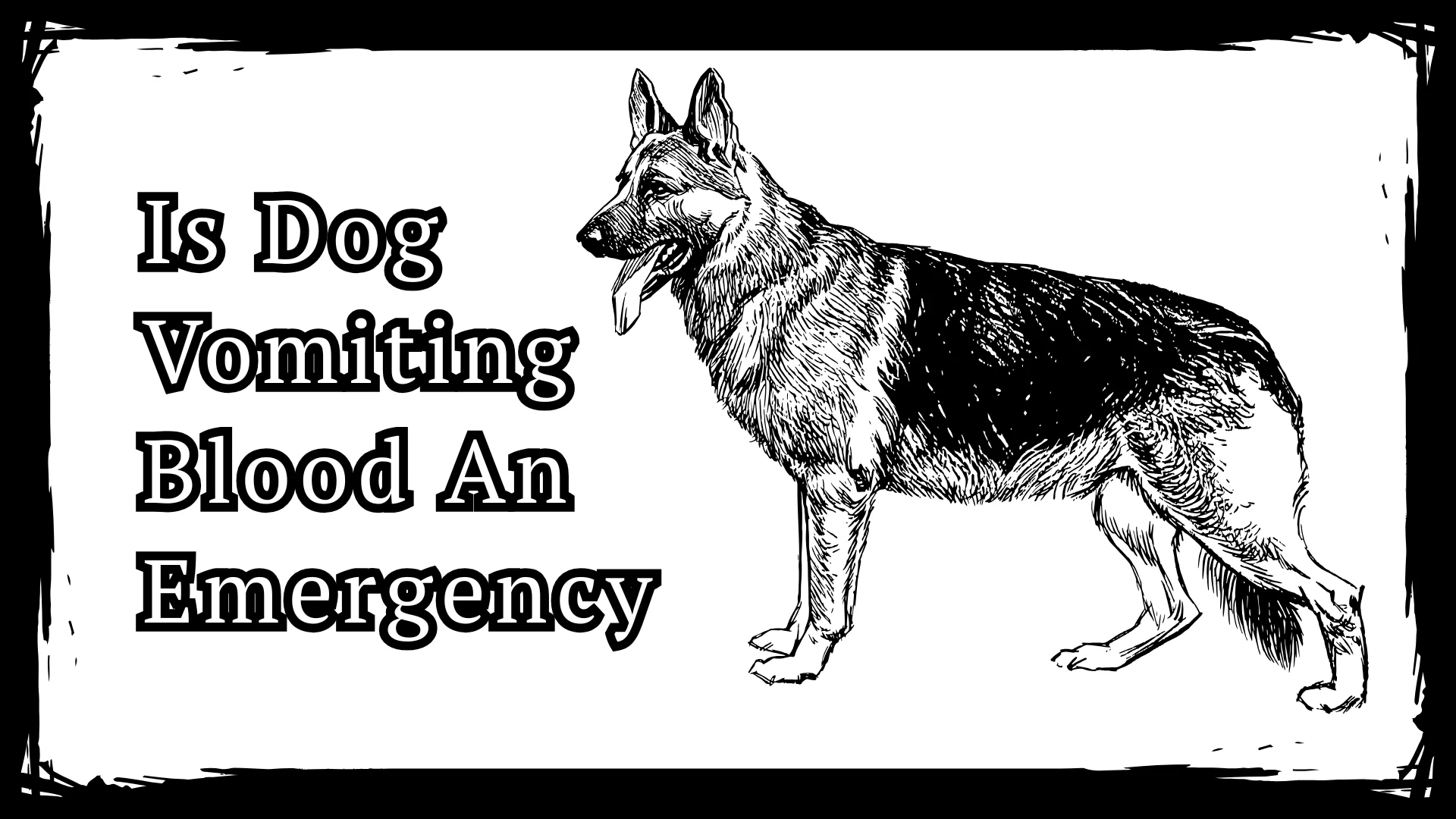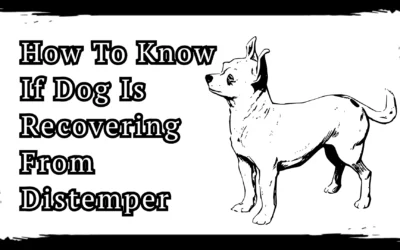Is Dog Vomiting Blood An Emergency? Seeing a dog vomit blood can be scary for any pet parent. Even a small amount of blood in vomit could mean something serious is wrong.
Yes, dog vomiting blood is an emergency because it can be caused by serious conditions like stomach ulcers, poisoning, internal injury, infections, blood clotting problems, or even cancer. Immediate veterinary care is needed to diagnose and treat the problem before it gets worse.
This article explains what bloody vomit means, why it happens, and when it’s an emergency—so dog owners can act fast and keep their furry friend safe.
What Does It Mean If a Dog Vomits Blood?
When a dog vomits blood, it usually means there’s bleeding in the stomach, throat, or intestines. It may be caused by ulcers, poison, infections, or internal injuries. Even if it looks minor, bloody vomit is a warning sign. Pet parents should contact a vet immediately to keep their dog safe.
What Does Vomiting Blood Look Like In Dogs?
Blood in vomit can appear in several ways:
- Bright red: Indicates fresh bleeding, possibly from the mouth, throat, or upper GI tract.
- Dark brown or black, like coffee grounds: Signals digested blood from internal bleeding—often more dangerous.
- Streaks or specks: These could be minor, but they still warrant a checkup.
Is Dog Vomiting Blood An Emergency?

Yes, a dog vomiting blood is often a medical emergency. It could mean internal bleeding, poisoning, stomach ulcers, or a serious infection. Even small amounts of blood in vomit need quick vet attention. Acting fast helps avoid bigger problems and gives the dog a better chance to recover safely.
What Can Cause Bloody Vomit In Dogs?
Here are the most common causes of bloody vomit in dogs, ranging from mild to life-threatening:
Stomach Ulcers
These painful lesions can cause internal bleeding and are often triggered by medications like NSAIDs.
Ingesting Toxins or Foreign Objects
Poisonous plants, rat poison, or sharp objects may damage the digestive tract.
Gastrointestinal Infections or Parasites
Viruses like parvovirus or parasites such as hookworms can cause severe internal bleeding.
Trauma or Internal Injury
A fall, blow, or accident can result in bleeding inside the body.
Blood Clotting Disorders
Conditions like hemophilia or toxin exposure may prevent normal clotting, leading to blood in vomit.
Cancer (Gastrointestinal Tumors)
Some cancers cause ulceration or bleeding in the stomach lining.
Also Read: Why Is My Dog Shaking And Vomiting
7 Warning Signs It’s An Emergency
If your dog is vomiting blood and showing any of the following symptoms, it’s an immediate emergency:
- Lethargy or weakness
- Pale gums
- Rapid heart rate or breathing
- Abdominal pain or bloating
- Collapse or disorientation
- Repeated vomiting
- Bloody diarrhea alongside vomiting
Don’t wait. Contact your veterinarian or an emergency animal clinic immediately.
Should I Bring My Dog To The Vet If It Vomits Blood?
Yes, a dog that vomits blood should always be seen by a vet. It could be a sign of stomach ulcers, poisoning, or internal injury. Even if the dog seems fine afterward, the cause could be serious. Early treatment helps prevent complications and protects the dog’s overall health.
Treatment Options
Depending on the cause, treatment may include:
- IV fluids and hospitalization
- Medications for ulcers or infections
- Blood transfusions in severe bleeding cases
- Surgery to remove blockages or tumors
- Activated charcoal to absorb toxins
How Do Vets Treat Vomiting In Dogs?
Vets treat vomiting in dogs based on the cause. They may use IV fluids, anti-nausea medicine, or antibiotics. If there’s internal bleeding, surgery or hospitalization may be needed. Tests like blood work or X-rays help find the problem. Quick treatment helps the dog recover faster and avoids serious complications.
Must Read: How To Clean Dog Vomit
Is There Any Way To Prevent My Dog From Vomiting Blood?
Yes, some steps can help prevent bloody vomit. Dog owners should avoid giving harmful foods, human medications, or bones. Regular vet checkups, parasite control, and a balanced diet protect the digestive system. Keeping dangerous items out of reach also lowers the risk of injuries and internal bleeding.
Why Is My Dog Throwing Up Blood?
A dog may vomit blood due to stomach ulcers, swallowed objects, poisoning, infections, or trauma. Sometimes, serious illnesses like cancer or blood-clotting issues are to blame. Even small signs should never be ignored. It’s important to visit a vet to find out the cause and start treatment quickly.
Dog Vomiting Blood But Acting Normal
If a dog vomits blood but acts normally, it could still be a serious health warning. Early-stage ulcers, mild injuries, or swallowed irritants might not affect behavior at first. Just because a dog seems fine doesn’t mean the problem isn’t dangerous. A vet check is still strongly advised.
Home Remedies For Dog Vomiting Blood
Bloody vomit should never be treated at home without vet advice. Giving water, bland food, or natural remedies might make things worse. Since causes like toxins or ulcers can be life-threatening, it’s safest to let a vet decide the treatment. Home care is only safe after a proper diagnosis.
Dog Vomit Blood Before Death
In some cases, dogs may vomit blood before death due to severe internal bleeding, organ failure, or late-stage illness like cancer. It’s a heartbreaking sign that the body is shutting down. Immediate vet care is crucial, but sadly, sometimes it’s a sign of the end for terminally ill dogs.
Also Read: Should I Put My Dog Down If He Is Still Eating
Dog Vomiting Blood And Mucus
When a dog vomits blood and mucus, it may signal irritation or inflammation in the stomach or intestines. Conditions like gastritis, infections, or poisoning can cause this mix. Even if the dog appears calm, this symptom should be taken seriously. A quick vet visit can help prevent worsening health.
First Aid For Dog Vomiting Blood
If a dog vomits blood, keep it calm and stop food or water intake. Do not give any medicine without vet approval. Note the vomit’s color and texture. Call the vet or emergency clinic right away. First aid at home is limited—professional care is the safest option.
Is Dog Vomiting Blood An Emergency Home Remedies
Home remedies should never replace emergency vet care when a dog vomits blood. While bland diets like boiled chicken are often used later, the first step must be a vet visit. Vomiting blood is often linked to serious causes like ulcers or toxins and needs expert treatment right away.
Read More: What Home Remedy Can I Give My Dog For Coughing
Pictures Of Dog Vomit With Blood And Mucus

Pictures of dog vomit with blood and mucus often show yellow streaks or jelly-like slime. These visuals help describe the problem to the vet. While disturbing, snapping a clear photo can guide proper diagnosis. It’s a helpful tool for understanding what’s happening inside the dog’s digestive system.
Tiny Specks Of Blood In Dog Vomit
Small red specks in vomit can come from minor irritation, gum bleeding, or early signs of stomach trouble. While it may seem harmless, it could be the start of a bigger issue. It’s best not to ignore it—calling the vet ensures peace of mind and early care.
FAQs
How Do You Know If Blood Is Serious In Vomit?
Bright red blood or dark coffee-like vomit means serious bleeding. If it’s frequent or paired with weakness, it’s an emergency needing immediate vet care.
What To Do If Your Dog Coughs Up Blood?
If a dog coughs up blood, call the vet immediately. It could be a lung infection, trauma, or a serious illness. Don’t wait or treat at home.
What Infection Causes Dogs To Vomit Blood?
Infections like parvovirus or severe gastritis can make dogs vomit blood. These illnesses damage the stomach lining and need fast treatment to avoid life-threatening complications.
How Much Blood In Vomit Is Worrying?
Any amount of blood in vomit is concerning. Large amounts, frequent vomiting, or dark, tar-like blood signal a serious issue needing emergency vet attention.
Will Vomiting Blood Go Away?
Vomiting blood rarely goes away without treatment. It often signals a deeper problem like ulcers, toxins, or infections. Vet care is needed to stop it safely.
Can Food Poisoning Cause Blood In Vomit?
Yes, food poisoning can irritate the stomach lining and cause bloody vomit. Spoiled food, toxins, or harmful bacteria often lead to vomiting and serious illness.
How To Tell If Internal Bleeding?
Signs include pale gums, weakness, fast heartbeat, swollen belly, or bloody vomit. These symptoms mean possible internal bleeding and require emergency vet care right away.
What Are The Red Flags For Vomiting?
Red flags include vomiting blood, repeated episodes, lethargy, pale gums, and loss of appetite. These signs show a serious health issue that needs urgent attention.
Can Internal Bleeding Heal On Its Own In Dogs?
Most internal bleeding won’t heal on its own. It needs vet treatment, or the dog’s life could be at risk. Don’t wait—call a vet immediately.
What Are The Warning Signs Of Gastrointestinal Bleeding?
Symptoms include bloody vomit, dark stool, weakness, pale gums, and loss of appetite. These warning signs mean the dog needs immediate vet attention for GI bleeding.
Conclusion
Seeing blood in a dog’s vomit is always alarming—and it should be. Whether it’s just red specks or a large amount, bloody vomit often points to something serious going on inside the dog’s body. From ulcers and poisoning to infections and internal injuries, the causes can be life-threatening if ignored.
Even if the dog seems fine afterward, vomiting blood is never normal. Acting quickly by contacting a veterinarian can save the dog’s life and prevent unnecessary suffering. Pet parents know their dogs best, and if something feels wrong, it’s always better to be safe than sorry.
Timely care, regular vet checkups, and a safe home environment are the best ways to keep dogs healthy and prevent such scary situations. When in doubt, trust your instincts and get help fast—because dogs can’t speak, but their symptoms do.




